The 57th Annual Meeting of the Irish Neurological Association
Address by Dr. Donal Costigan, INA President 2021
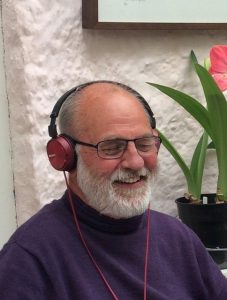 It was a great privilege to be the President of the INA charged with leading the arrangements. Let me first express, on behalf of the INA, gratitude to all the presenters who submitted papers of such a high standard, in double measure due to the need to pre-record poster audio and platform presentation. There would be no meeting without this hard work. Over 90 abstracts were offered either platform or poster. We are also indebted to the members who chaired sessions, whose comments and questions were so well chosen, and to our thoughtful and discerning judges. By tradition, the judges remain nameless. I would also like to thank all those who volunteered assistance when I first took on the mission.
It was a great privilege to be the President of the INA charged with leading the arrangements. Let me first express, on behalf of the INA, gratitude to all the presenters who submitted papers of such a high standard, in double measure due to the need to pre-record poster audio and platform presentation. There would be no meeting without this hard work. Over 90 abstracts were offered either platform or poster. We are also indebted to the members who chaired sessions, whose comments and questions were so well chosen, and to our thoughtful and discerning judges. By tradition, the judges remain nameless. I would also like to thank all those who volunteered assistance when I first took on the mission.
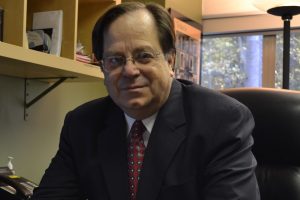 We had two special guest lecturers who generously shared their knowledge of important topics in clinical neuroscience. Dr Jorge Juncos gave the Callaghan Memorial lecture entitled ‘Tourette Syndrome: A spectrum disorder?
We had two special guest lecturers who generously shared their knowledge of important topics in clinical neuroscience. Dr Jorge Juncos gave the Callaghan Memorial lecture entitled ‘Tourette Syndrome: A spectrum disorder?
Dr Alberto Blanco-Campal was the guest at our neuropsychology seminar, with contributions from Dr. Paul Crowley and myself.Dr Jorge Juncos gave the Callaghan Memorial lecture. My old colleague from Emory University in Atlanta drew on his career-long experience with a review of Tourette syndrome (TS), characterised by a combination of involuntary movement, behavioural traits and psychosocial interactions. Although a rare condition it persists into adulthood and the underlying mechanism is fascinating but incompletely understood. Jorge brought out some remarkable insights. He evinced the interaction of both the internal sensory map and the social environment with patient’s symptoms. Jorge is clearly a neuroscientist and not afraid to wear the psychiatrist’s lenses. The therapeutic approach to the movements in isolation fails to deliver results. He showed the conceptual development which places TS within a range of related disorders, such as ADHD and autism, based inter alia upon the gradual emergence of a polygenic pattern of inheritance. He stressed the benefit of behavioural strategies which should supersede the pharmacological approach, although he also eloquently reviewed drug choices. Through his concept of a sensitized set of interactions between multiple nuclei, the social network, one could understand how simplistic attempts at symptom relief, including deep brain stimulation, have been frustrated. Professor Kathleen Gorman of Children’s University Hospital, Temple St, had a live exchange with Jorge at the end of his pre-recorded presentation, much appreciated by Jorge and the audience. Unfortunately the HSE computer malware attack denied Kathleen access to her archive of video vignettes of tics and paediatric movement disorders, but the discussion was undimmed.MoreDr Alberto Blanco-Campal was the guest at our neuropsychology seminar, which I introduced with a brief survey of my neurology consultation service in St Patrick’s University Hospital. Alberto illuminated the process of neuropsychological testing in the setting of dementia and primary progressive aphasia. He showed how different deficits, such a semantic aphasia and constructional apraxia, could converge on a similar result, such as a bad clock face. He also gave a fascinating exploration of language testing with recordings of patient interviews. Alberto stressed the need to detect the actual basis for failure on any given subtest. Dr Paul Crowley rounded off the session, live, with a presentation of dressing apraxia with selective involvement, probably affecting dorsal stream visual function but preserving the ventral pathway in the setting of patient with Creutzfeld Jakob disease. As in 2020 both our principal guests pre recorded their presentations, with a hybrid of live time at the end.
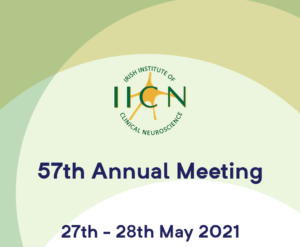 Setting up the meeting was an exercise in adaptation to the pandemic and the last minute double whammy of the HSE computer malware attack. I think we managed to find non-HSE blocked email addresses across the board, and no doubt many clever “workarounds” were used. I thought the platform chairs made great use of the question time, while waiting for items to emerge from the Q&A. At a real meeting, live questions coming from the floor might have been more uneven, although badly missed. The Posters-to-Platform arrangement worked well, and chairs gave a few honourable mentions as well their choice of winner in each of the four zones.
Setting up the meeting was an exercise in adaptation to the pandemic and the last minute double whammy of the HSE computer malware attack. I think we managed to find non-HSE blocked email addresses across the board, and no doubt many clever “workarounds” were used. I thought the platform chairs made great use of the question time, while waiting for items to emerge from the Q&A. At a real meeting, live questions coming from the floor might have been more uneven, although badly missed. The Posters-to-Platform arrangement worked well, and chairs gave a few honourable mentions as well their choice of winner in each of the four zones. To view the INA meeting programme please click here
MoreHaving a consultant colleague bring out the merits of a poster gave it new impact. The downside, of course, was the lack of opportunity to question and chat with the presenters. A need to be accessible at a specific hour might be impossible for some on call authors, and was therefore avoided so as not to disadvantage them. The two-minute audio recording was on tap for poster viewing and the authors forwarded a PowerPoint for use in this session. I hope that the one or two minute leg stretch was a welcome addition.
Virtual meetings have pros and cons. The geographic and international reach of the virtual meeting is a plus. The lack of chance contact and audible feedback, such as applause, are clear negatives. Those effects normally help to gauge and amplify the impact of the papers. Perhaps we need to buy more Zoom webinar windows to enable a larger audience to be seen and heard during questions and answers, but it could be a logistical challenge.
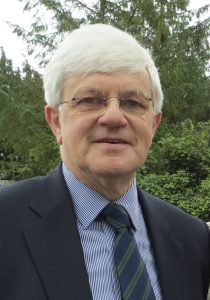
The interval between the last session and the announcement of the awards was nicely filled by a tribute to Dr Stanley Hawkins that Dr Ray Murphy recorded, on the occasion of Stanley’s move to Scotland. Of course Stanley assures us that he will remain an active INA member. This time window might be usefully anticipated in future meetings. It is important to collate the judges’ and chairs’ observations before the closing ceremony
 We set up a neurology quiz at 1400 on Friday, in the form of Neuro Kahoot!. With movement disorder video contributions from several clinicians around the island, neuropathology images from Professor Michael Farrell, video research and collation by Dr Tudor Munteanu, John’s crafty media based questions, and Professor Tim Lynch’s expert comments on phenomenology, Dr John McHugh chaired a 30 minute game. The players were identified by nickname but a clue to their associated institution as well.
We set up a neurology quiz at 1400 on Friday, in the form of Neuro Kahoot!. With movement disorder video contributions from several clinicians around the island, neuropathology images from Professor Michael Farrell, video research and collation by Dr Tudor Munteanu, John’s crafty media based questions, and Professor Tim Lynch’s expert comments on phenomenology, Dr John McHugh chaired a 30 minute game. The players were identified by nickname but a clue to their associated institution as well.The entertainment on Thursday evening from the James Joyce Cultural Centre was the product of a lengthy planning phase, which may have reduced our chance to publicise it more effectively. It was an attempt to replace the conviviality of the meeting in general with a performance and a chance to hear members of the audience making comments and exchanging with the performers.
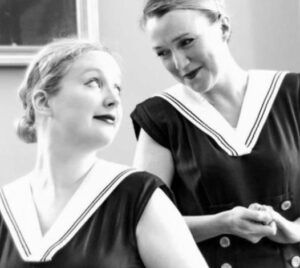
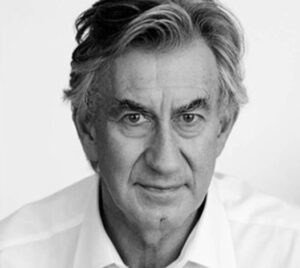 In the strict absence of pharmaceutical support for this part of the meeting, it was dependent on funds raised. If online entertainment is considered again at the meeting, it might be prudent to poll the potential registrants months ahead in order to decide on a medium and to plan a budget.More
In the strict absence of pharmaceutical support for this part of the meeting, it was dependent on funds raised. If online entertainment is considered again at the meeting, it might be prudent to poll the potential registrants months ahead in order to decide on a medium and to plan a budget.MoreIn our event readings from James Joyce by the actor Mr Barry McGovern, along with musical performances by Ms Sinead Murphy and Ms Darina Gilligan of the James Joyce Cultural Centre provided over an hour of cultural diversity on Thursday evening. They put a beautiful live programme together with professional polish, lighting and audio, broadcasting from the elegant 18th c interior of the James Joyce Cultural Centre on North Great George’s St.
Access ends Friday 9 July 2021.
Recordings of sessions of the meeting may be accessed at the link below by IICN members and INA Meeting delegates. For members or neuroscientists in training who were unable to attend the meeting but who wish to view meeting sessions or posters, delegates may still register for the meeting to access the post meeting recordings and poster viewing.
I hope you will avail of the opportunity for a second helping of human genius across the spectrum of neurology.
Access ends Friday 9 July 2021.
The judges, who generously gave of their time and expertise to review and adjudicate on platform and poster presentations at the INA meeting, were unanimous in their opinion that the standard of presentation was exceptionally high at the meeting. There were six awards made in different categories and congratulations are due to all presenters and their supervisors.
More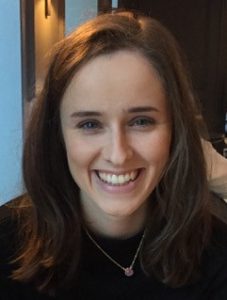 The overall winning presentation (Harold Millar Prize) by Dr. Mary Clare McKenna and colleagues “Radiological features of primary progressive aphasias: a longitudinal quantitative neuroimaging study”.
The overall winning presentation (Harold Millar Prize) by Dr. Mary Clare McKenna and colleagues “Radiological features of primary progressive aphasias: a longitudinal quantitative neuroimaging study”.
McKenna MC, Hutchinson S, Bede P) was of exceptional quality, highlighting a serial quantitative MRI study of patients with primary progressive aphasia. Mary Clare defended her data and conclusions with great authority.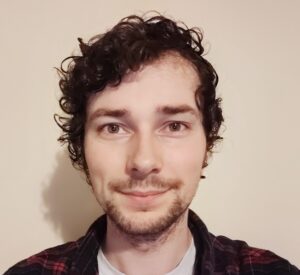 The John Kirker Prize for best Epilepsy related presentation and sponsored by the Irish Epilepsy League was awarded to Dr. Chris Greene for his presentation “Imaging blood-brain barrier integrity in temporal lobe epilepsy by dynamic contrast-enhanced MRI”.
The John Kirker Prize for best Epilepsy related presentation and sponsored by the Irish Epilepsy League was awarded to Dr. Chris Greene for his presentation “Imaging blood-brain barrier integrity in temporal lobe epilepsy by dynamic contrast-enhanced MRI”.
Greene C, Hanley N, O’Rourke C, Connolly R, O’Keeffe E, Campbell M, Doherty CP.The Mark Gibson Prize for best Movement Disorder related presentation was awarded to Dr. Mark Kelly for his presentation ‘A portrait on CANVAS‘.
Kelly M, Bogdanova-Mihaylova P, Alexander M, Reilly M, Houlden H, Cortese A, Walsh R, Murphy S.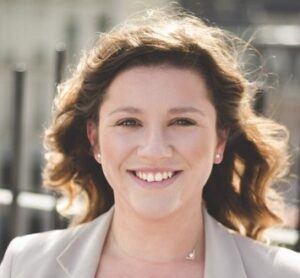 The Hugh Staunton Prize for best presentation by a medical student or intern was awarded to Ms. Lauren Vrbanic for her presentation “Causes and consequences of falls in an autopsy population”.
The Hugh Staunton Prize for best presentation by a medical student or intern was awarded to Ms. Lauren Vrbanic for her presentation “Causes and consequences of falls in an autopsy population”.
Vrbanic L, Donnelly A, Heffernan J, Coony M, Walsh A, Heany C, Howley R, Farrell M, Brett F.The John Lynch Prize for best poster presentation at the meeting was awarded to Dr. Michael Ita for his presentation “Development of a Pre-Clinical Model of Melanoma Brain Metastasis using Mouse B16F10-Luc melanoma cells and the characterisation of tissue-blood biomarkers of therapeutic response and disease progression”.
Ita M, Wang JH, Lim C.H., Redmond HP.The Neurosurgical prize for best neurosurgical presentation at the meeting was awarded to Dr. Alex Dudley for his presentation “Pathologically proven cerebral amyloid angiopathy related inflammation- A single centre: 10 year experience”.
Dudley A, Costelloe L, Moroney J, Looby S, Beausang A, Farrell M, McGovern E.A big personal thanks to the IICN team under Colette Fitzpatrick’s leadership, the guidance of IICN Dean, Dr John McHugh, and his committee. The magnificent software work and audiovisual juggling by Peter, Michelle and Craig was superb. Thanks again!
I also acknowledge our sponsors from the pharmaceutical industry, whose funds and interest are indispensable. I hope they were able to enjoy exposure and contact with meeting attendees.
Every best wish to Dr Paul Crowley who is going to preside over INA 2022, and we hope with no “V”.
Donal Costigan MB, ABPN, ABEM 01.06.21
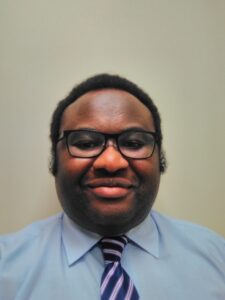 The John Lynch Prize for best poster presentation at the meeting was awarded to Dr. Michael Ita for his presentation “Development of a Pre-Clinical Model of Melanoma Brain Metastasis using Mouse B16F10-Luc melanoma cells and the characterisation of tissue-blood biomarkers of therapeutic response and disease progression”.
The John Lynch Prize for best poster presentation at the meeting was awarded to Dr. Michael Ita for his presentation “Development of a Pre-Clinical Model of Melanoma Brain Metastasis using Mouse B16F10-Luc melanoma cells and the characterisation of tissue-blood biomarkers of therapeutic response and disease progression”.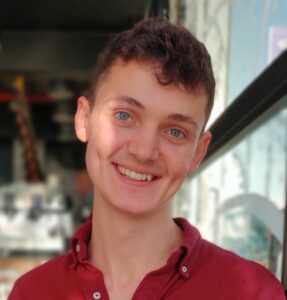 The Neurosurgical prize for best neurosurgical presentation at the meeting was awarded to Dr. Alex Dudley for his presentation “Pathologically proven cerebral amyloid angiopathy related inflammation- A single centre: 10 year experience”.
The Neurosurgical prize for best neurosurgical presentation at the meeting was awarded to Dr. Alex Dudley for his presentation “Pathologically proven cerebral amyloid angiopathy related inflammation- A single centre: 10 year experience”.

